STONEFISH / SYNANCEIIDAE
The stonefish is aptly named. At first glance, it looks like a stone.
One reason why most divers don't even see it.
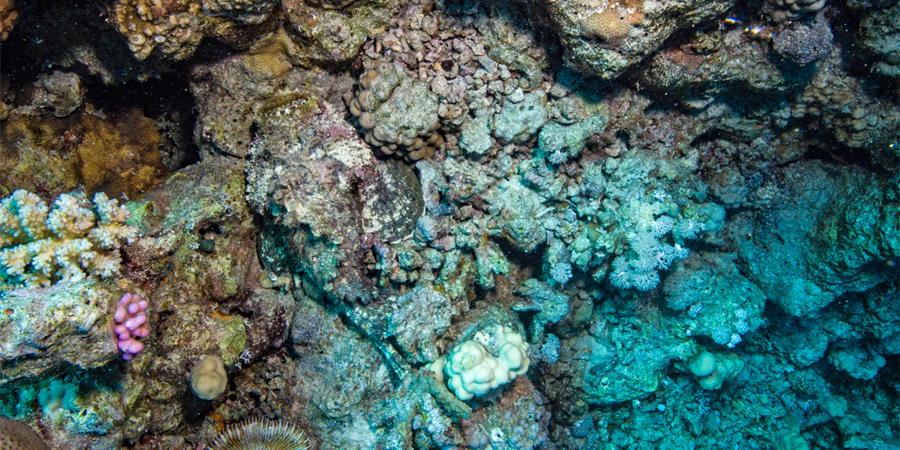
It takes a trained eye to recognize a stonefish.
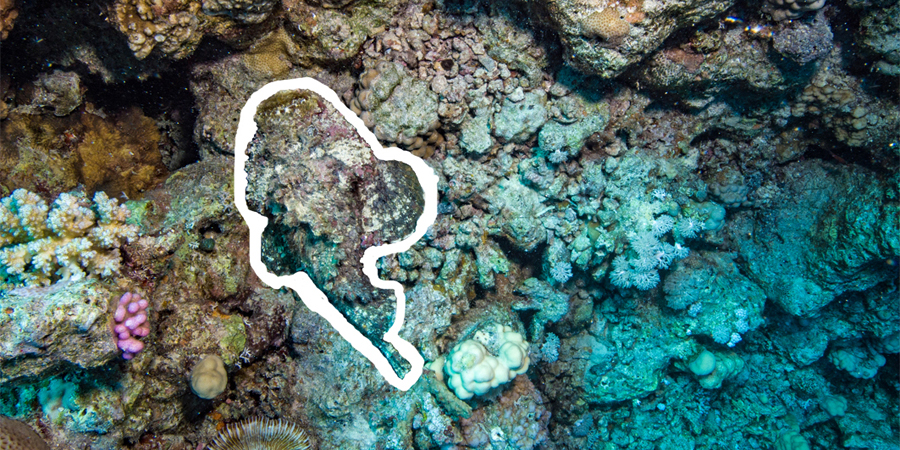
The stonefish is one of the most poisonous fish. This may be the reason why it is described as one of the most dangerous fish. Wrongly so, it is not dangerous for us divers. Because it does not attack us. It often just lies there and waits patiently for days for its prey, which it then sucks into its large mouth in a flash. Stonefish live in the tropical Indo-Pacific and the Red Sea. There are two species in the Red Sea.
One of them is the real stonefish.
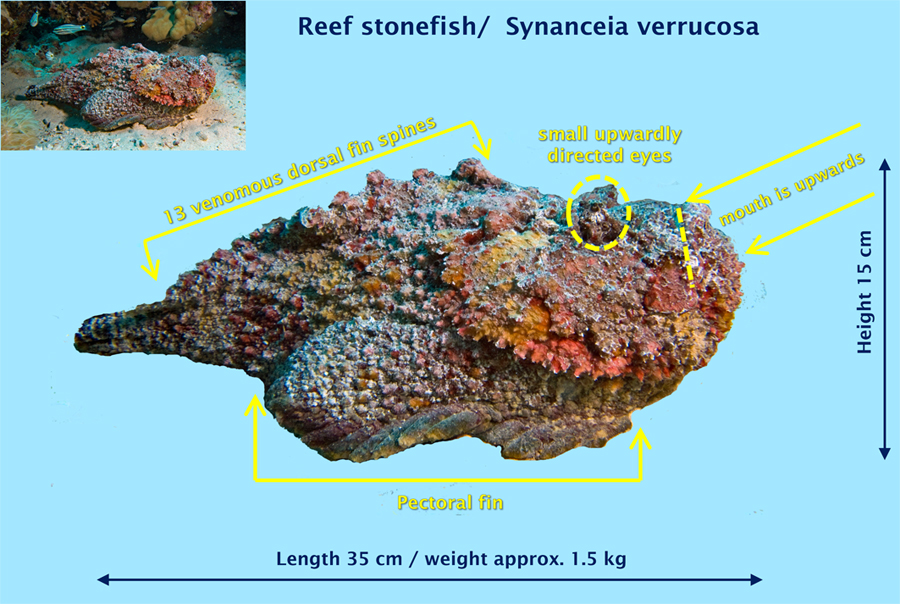
Its body is plump with a large head. It is a poor swimmer. It moves sluggishly and uses its large pectoral fins. It looks like it is hopping and not swimming. Its venom is found in the 13 hard rays of the dorsal fin, the first 3 of the anal fin and the first 2 of the pelvic fin. The venom is made up of various high molecular weight proteins.The highly concentrated venom is only released when pressure is applied to the venomous spines. This can happen when bathers step on a stonefish or divers exert pressure on the spines when kneeling down. Fortunately, this happens extremely rarely, if at all, once every few years. The venom is not fatal for healthy adults. The very severe pain at the puncture site disappears within 24 hours because the protein-containing venom decomposes. The decomposition process can be accelerated by treating the injection site with very hot water. There is no antidote, as there is for snake venom.
Stonefish feed on crustaceans, echinoderms (starfish, sea urchins, sea cucumbers) and fish. Like many fish species, rockfish reproduce by laying eggs. The females lay large quantities of eggs near coral reefs and in seagrass meadows. There they are fertilized by the males. This process takes place at night at full or new moon. The fertilized eggs develop into larvae from which, after three to four weeks, small stonefish hatch. They grow by around 15 cm per year and are fully grown after two to three years. Even though the stonefish is feared because of its poison, it is an important part of the ecosystem.
The rule is: look YES, touch NO.
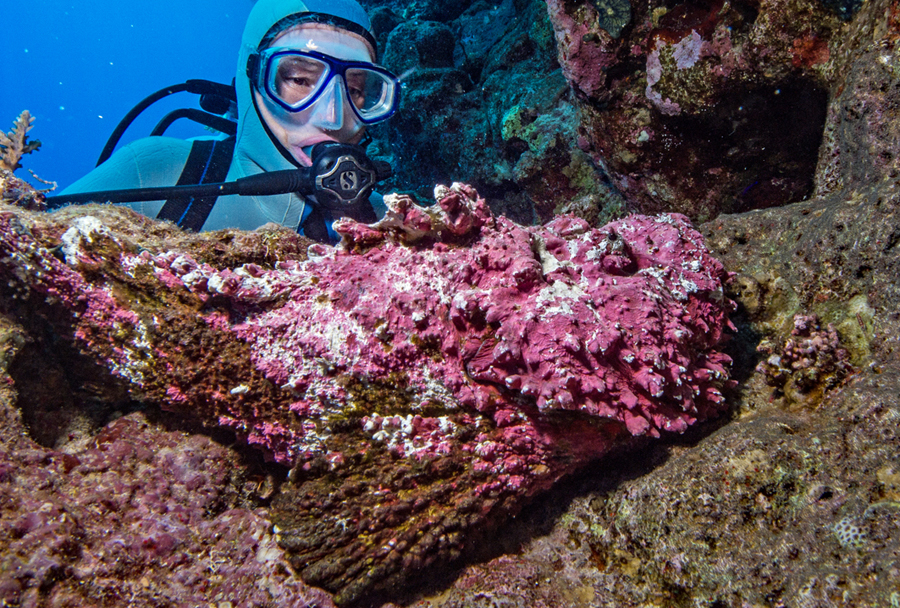
The second stonefish species found in the Red Sea is the Filament Devilfish / Inimicus filamentosus. Also known as the telescopic eye rockfish and Red Sea walkman.
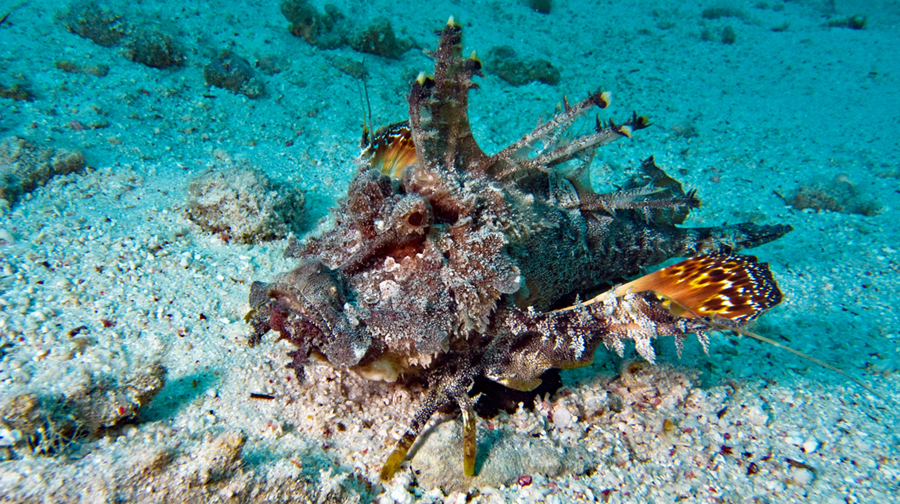
The term Red Sea Walkman is certainly the most appropriate. Its pelvic fins are developed in such a way that the first two front fin rays are free-standing and look like claw-like feet. It uses these to crawl across the bottom. Good to see in the movie Red Sea Walkman.
Here is the link: www.subex.org/gallery/videos
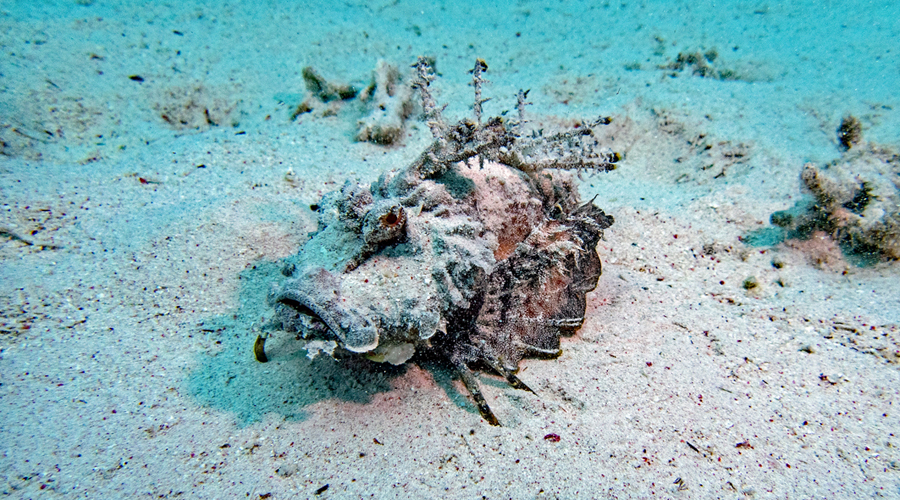

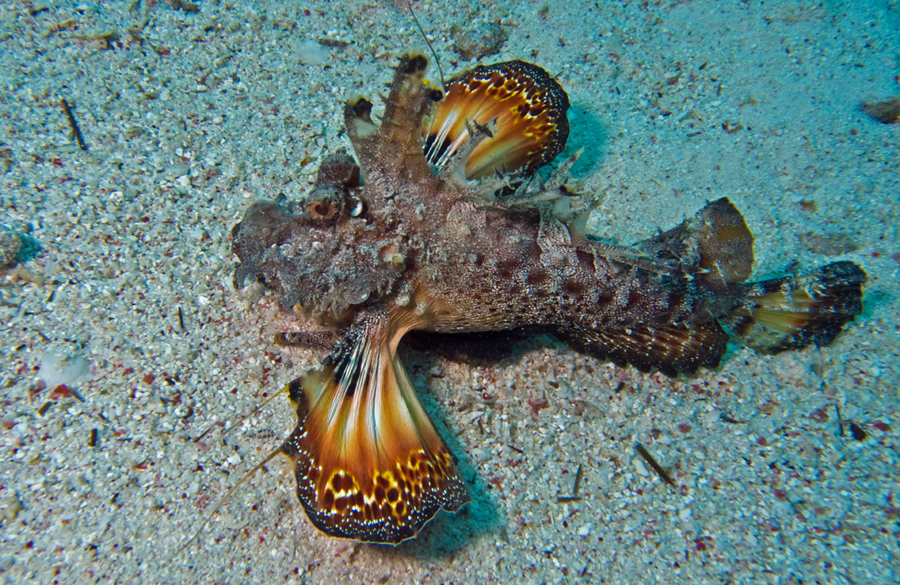
The Red Sea Walkman belongs to the same family as the stonefish. Although it is somewhat smaller, measuring around 20 cm when fully grown, it is just as poisonous as the stonefish. Both the true stonefish and the red sea walkman belong to the group of scorpionfish/Scorpaenidae. Known as scorpionfish and lionfish. But more on this in the Subipedia of the next SUBDate.
Photos: Johann Vifian
Sources: wikipedia / info-fisch / fisch-wissensforum / marinespecies
